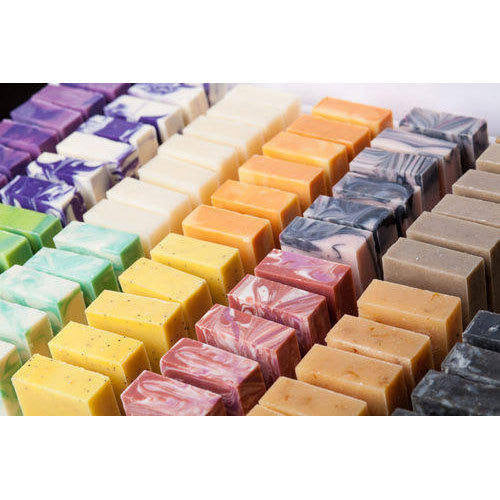
Let’s talk about soap.
Share
We humans have been making and using soap since before we invented the wheel.
The creation of soap, like so many other wonderful discoveries,was likely accidental. The prevailing story holds that on Mount Sapo, animals were burned as offerings to the gods. After the ceremonies, the fire pits were full of ashes and animal fats. When it rained, water ran through the ashes and fats, washing them down the river. When the woman took their washing to the river, they found clumps of a pale, waxy substance floating in the water. The woman washed their clothes by pounding them on the rocks. When the waxy substance was beaten with the clothes, it made a lather, and the clothes got cleaner.
Eventually, this was puzzled out, and the process of making soap on purpose began. While technology may have changed a lot over the years, soap has always stuck around. Today we’re putting those same age-old techniques to work, using them to create our little blocks of everyday luxury.
Soap making is a science, an art, and a challenge. You start by combining oils with an alkali substance know as ‘lye. When the two join together, the magic happens ( A.K.A. a chemical called ‘saponification’).

What is lye?
A lot goes into making our handcrafted soaps, and we couldn’t do it without lye. Also known as sodium hydroxide, lye is what makes soap,soap! Lye is often a misunderstood ingredient. Once it undergoes a chemical reaction to become soap, it’s completely safe.
Lye is a highly alkaline chemical solution. The most commonly is sodium hydroxide, NaOH, but lye can also refer to potassium hydroxide, KOH.
as an alkali, lye solution is highly basic. if you remember your high school chemistry days, pH exist on a scale from 0 to 14. Acids are at the lower of the spectrum, while bases, also known as alkaline substances, are at the the higher end.
- Lemon juice has a pH of 2
- Water has a pH of 7 (neutral)
- Lye had a pH of 13
Both strong acids and strong bases are caustic and can damage human skin, which is why lye is often misunderstood. If lye comes in contact with your skin, it begins to react with the surface oils - a painful prospect that can lead to burns and irritation.

How does does lye in soap?
Bar soap is made through a chemical process known as saponification (Sapo is Latin for soap):
- A lye solution is combined with oil or fat to cause a chemical reaction.
- This reaction breaks down the fats or oils into fatty acid chains and the lye mixture is neutralised in to process.
Without lye in soap making, there would only be puddles of fat and oil.
Is lye safe, or is lye dangerous?
Lye, by itself, is extremely caustic. However, soap with lye should be completely safe - assuming it’s been made properly. Lye soap that is improperly made or aged can have too much or insufficiency mixed lye and remain corrosive.
It is for that reason that we “superfat” our soaps by adding more oils than required to ensure lye crystals are completely dissolved. We also cure the soap bars for 4-6 weeks to ensure they are not only safe but also highly moisturising and cleansing.
When it comes to soap, lye is your friend. Through the magic of chemistry, the plant oils in our bar soap produce a chemical reaction with the lye that leads to the creation of a glycerin rich soap bar that nourishes your skin.

